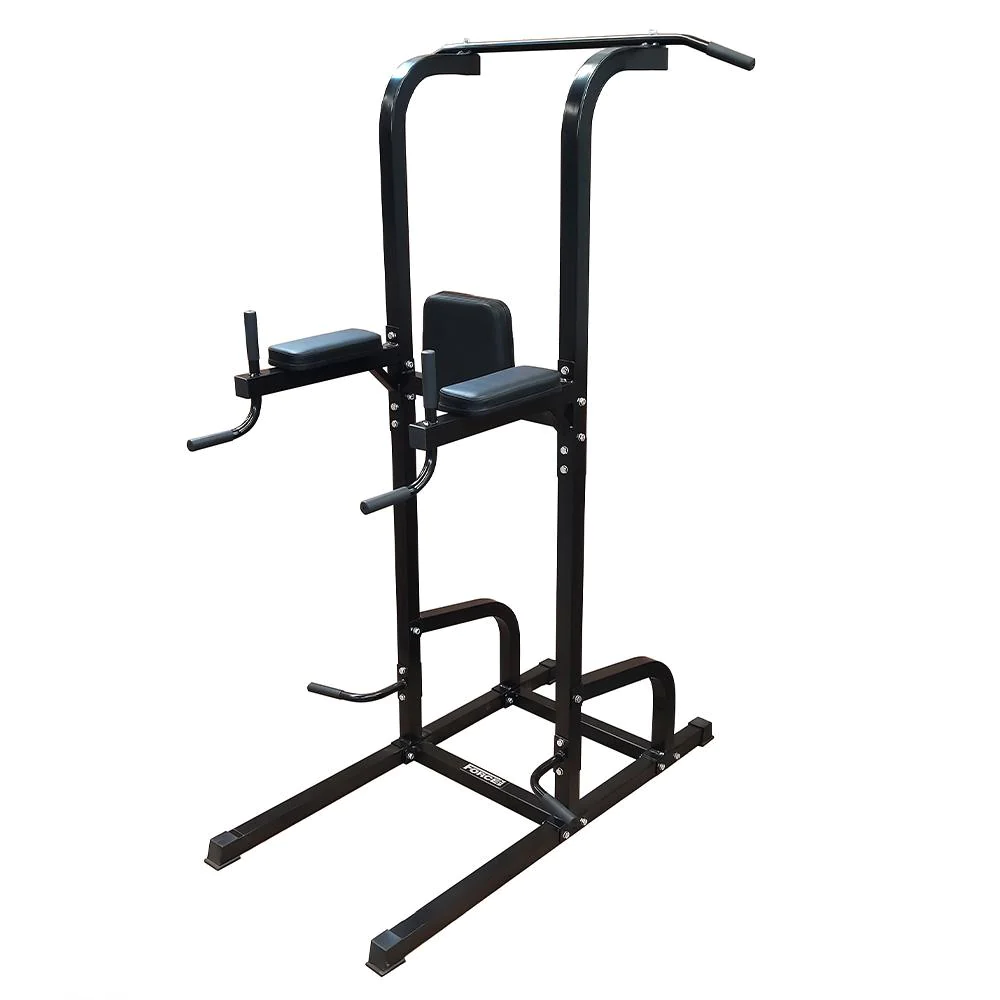In the realm of fitness equipment, there’s a plethora of options available, each promising to deliver the best results. Among these, the Power Tower Gym and the Dip Station stand out as popular choices for those looking to build strength and muscle.
But what sets them apart? Let’s dive into the differences and benefits of each to help you make an informed decision.
Power Tower Gym: Covers Your Entire Upper Body
Overview:
The Power Tower Gym is a versatile piece of equipment that offers a comprehensive workout solution. It’s designed to target multiple muscle groups, making it a cost-effective and space-saving option for fitness enthusiasts.
Key Benefits:
Multi-Functionality: The Power Tower Gym allows users to perform a variety of exercises, from pull-ups and chin-ups to dips and leg raises.
Cost-Effective: Given its versatility, investing in a Power Tower Gym can save you money in the long run as it eliminates the need for multiple pieces of equipment.
Space-Saving: Its compact design ensures that you get the most out of your workout space, making it ideal for home gyms.
Customizable Options: Depending on your budget, there are different service levels and models available, ensuring you get the best value for your money.
Dip Station: The Upper Body Powerhouse
Overview:
The Dip Station, as the name suggests, is primarily designed for performing dips – an exercise known for its effectiveness in building upper body strength.
Key Benefits:
Targeted Upper Body Workout: Dips are renowned for their ability to develop the chest, triceps, and shoulders, making the Dip Station a must-have for those looking to enhance their upper body physique.
Compact Design: Dip Stations are typically smaller than Power Towers, making them a great choice for those with limited space.
Sturdy Construction: Built to handle intense workouts, Dip Stations are durable and offer stability during exercises.
Affordable: For those on a tight budget but still looking to gain upper body strength, the Dip Station is an affordable option without compromising on quality.
List of Exercises You can do with the Power Tower
Pull-Ups: Targeting the latissimus dorsi, biceps, and upper back.
Chin-Ups: Emphasizing more on the biceps compared to pull-ups.
Dips: A compound movement for the chest, triceps, and shoulders.
Leg Raises: Using the parallel bars or armrests to target the lower abdominals.
Knee Raises: A variation of leg raises, focusing on the core.
Push-Ups: Many power towers come with push-up handles at the base, targeting the chest, triceps, and shoulders.
Vertical Knee Raises: Holding onto the parallel bars, you lift your knees to target the obliques and abdominals.
List of Exercises You can do with the Dip Station
Dips: The primary exercise for which the station is designed, targeting the chest, triceps, and anterior deltoids.
Leg Raises: Holding onto the bars, you can lift your legs to target the lower abdominals.
Knee Raises: A variation of leg raises, emphasizing the core.
Inverted Rows: By placing your feet in front and pulling yourself up, you can target the mid-back and biceps.
Static Holds: Holding yourself at the top of a dip position to engage and strengthen the core and upper body.
Bench Dips: By placing a bench or platform behind the dip station, you can perform bench dips to isolate the triceps.
Final Verdict
While both the Power Tower Gym and the Dip Station offer unique benefits, your choice ultimately depends on your fitness goals and available space.
If you’re looking for a comprehensive workout solution that targets multiple muscle groups including your back muscles, the Power Tower Gym is the way to go.
On the other hand, if you already have a chin up bar, you can go for the Dip Station.
Remember, the key to a successful fitness journey is consistency. Whether you opt for the Power Tower Gym or the Dip Station, dedication and regular workouts will ensure you achieve your desired results.
Choose wisely and happy lifting!

